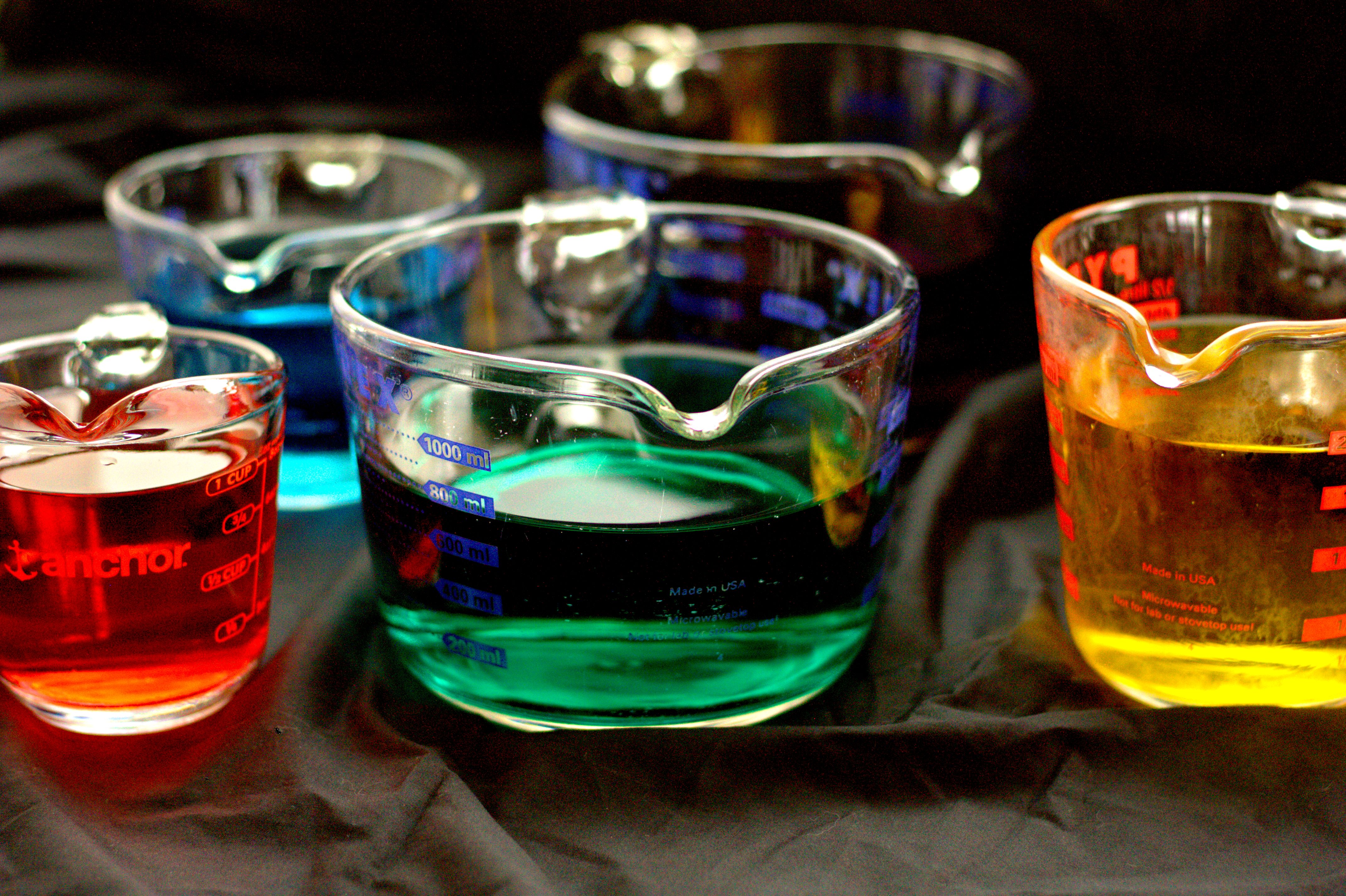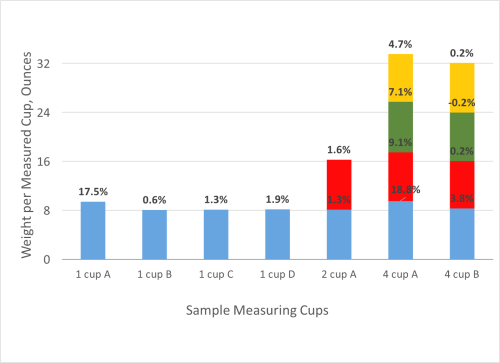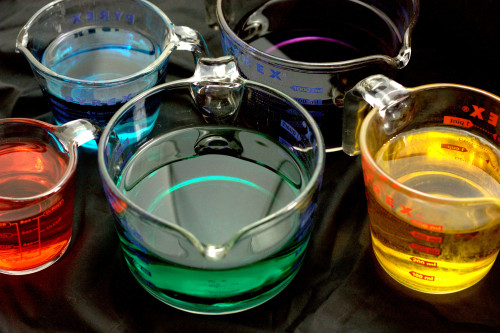Have you ever had that “oh no” sinking feeling in your stomach? Perhaps the last time was in school when you forgot your homework, or just after leaving for a trip you questioned if you left the door unlocked.
For a competitive cook, one way to get the same effect is to realize that your measuring cup, the one that you have had since your wedding over a decade ago, does not measure properly. I’m sure you can guess where I’m going with this one. I was recipe-creating and I had poured a sauce into my 16-ounce measuring cup. Since I wasn’t sure if it was closer to 6 or 7 ounces I poured it into one of my 8-ounce measuring cups. My new measurement was COMPLETELY different. I was flabbergasted. Weighing dried goods had been on my radar for years (future blog alert), but I had never thought to challenge the liquid measurement of well-known-brand measuring cups.
Which cups should I trust? Is this a common problem? I know of at least one other person who has a similar issue, but I wonder if it is more common place. Time to get calibrating!
I have a variety of measuring cups ranging from 1-cup to 4-cup capacity. I tested each by placing them on my scale, tarring the balance and weighing each cup of the given measuring devices capacity. What I noticed was surprising. Two of the seven cups tested were off by nearly 18% in their first cup of measurement with a water weight of 9.4 ounces instead of 8 ounces (that is nearly 3 tablespoons more liquid!) . One of the cups was a 4-cup capacity cup, which made up some of the error and displayed only 5% over-measurement at the 4-cup mark.
At the time of this writing I was not able to get responses from any of the manufacturers regarding their tolerances on accuracy. Regardless, my advice is to calibrate your measuring cups to ensure your liquid measurements are spot-on!
(2097)


